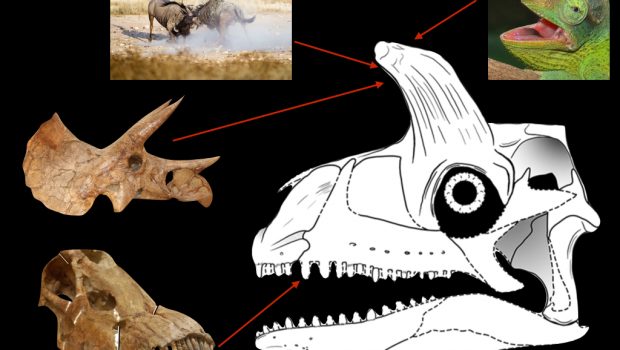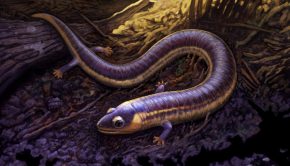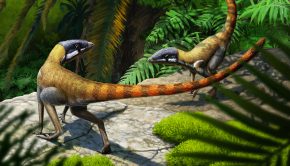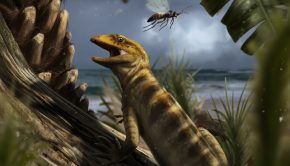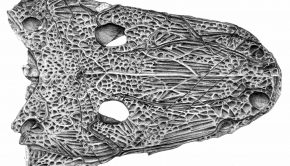Bizarre Archosauromorph Shares Traits with Ceratopsians, Sauropods and Cows
My friends know me as a theropod fanboy, which should come to no surprise, as I am a massive cliché of a palaeontologist (unashamedly so, as theropods are beyond cool). However, give me a weird archosauromorph and I might crack out a few lines from Django Unchained: “you had my curiosity, but now you have my attention”.
The Middle Triassic saw a flurry of evolution following the catastrophic, and borderline biblical, Permian-Triassic extinction event. The Earth’s biosphere had taken a huge knock, with 96% of marine species and 70% of terrestrial species vanishing from the face of the globe, affecting over four in five genera of all life on earth. But in the wake of the devastation, some persisted. There were opportunities to take, niches to fill. The dinosaurs had yet to begin their dictatorship of terrestrial environments, and were forced to share their habitat with other archosauromorphs (crocodile- and bird-line reptiles, with some basal groups), as well as dogged cynodonts (pun intended, the group that would bear the first true mammals) and tenacious temnospondyls (early amphibians with roots in the Carboniferous).
The large primary consumer niche, at this point in time, has historically been restricted to synapsids from clades such as edaphosaurids, dinocephalians, anomodonts. These are our some of our distant cousins, being more closely related to mammals than any other amniote, and it wasn’t until the Late Triassic that herbivorous archosauromorphs, including the prosauropods, take over this niche. Enter Shringasaurus indicus (Fig. 1).
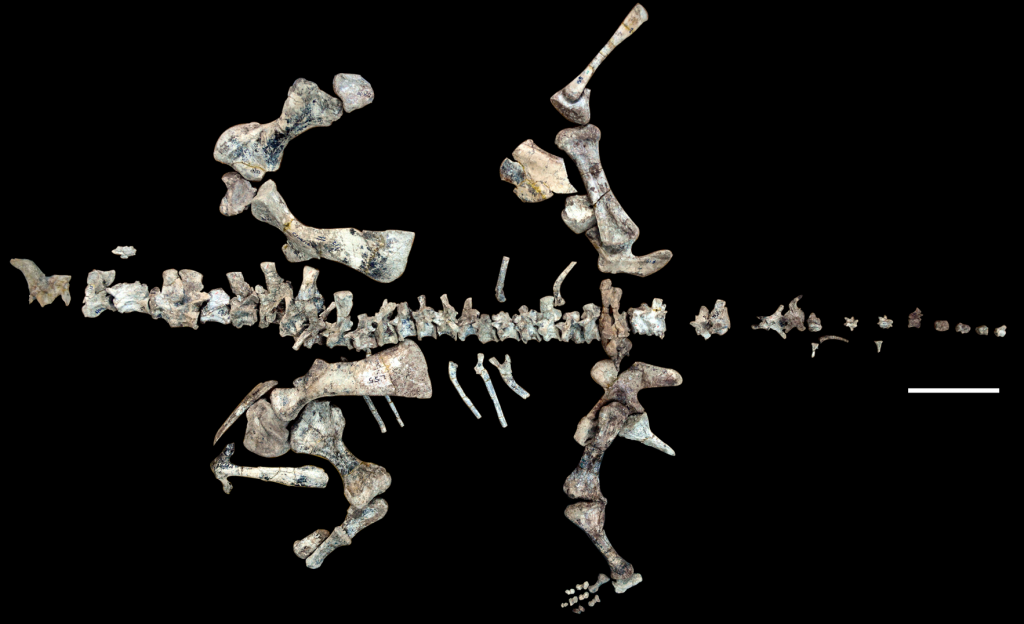
Fig. 1. Composite skeleton of Shringasaurus, with bones belonging to several individuals. Credit: Sengupta et al., 2017 (supplementary materials).
Sympathy for the Devil
Alone versus the herbivorous synapsid contingent, the newly described Shringasaurus represents the first known archosauromorph incursion into this ecological role. It is a moderately sized beast, 3-4m long, and is most curious in its morphology. A representative of the Allokotosauria, a stem archosauromorph clade (Fig. 2.), that never attained huge sizes and surprising in that they possess features associated with herbivory.
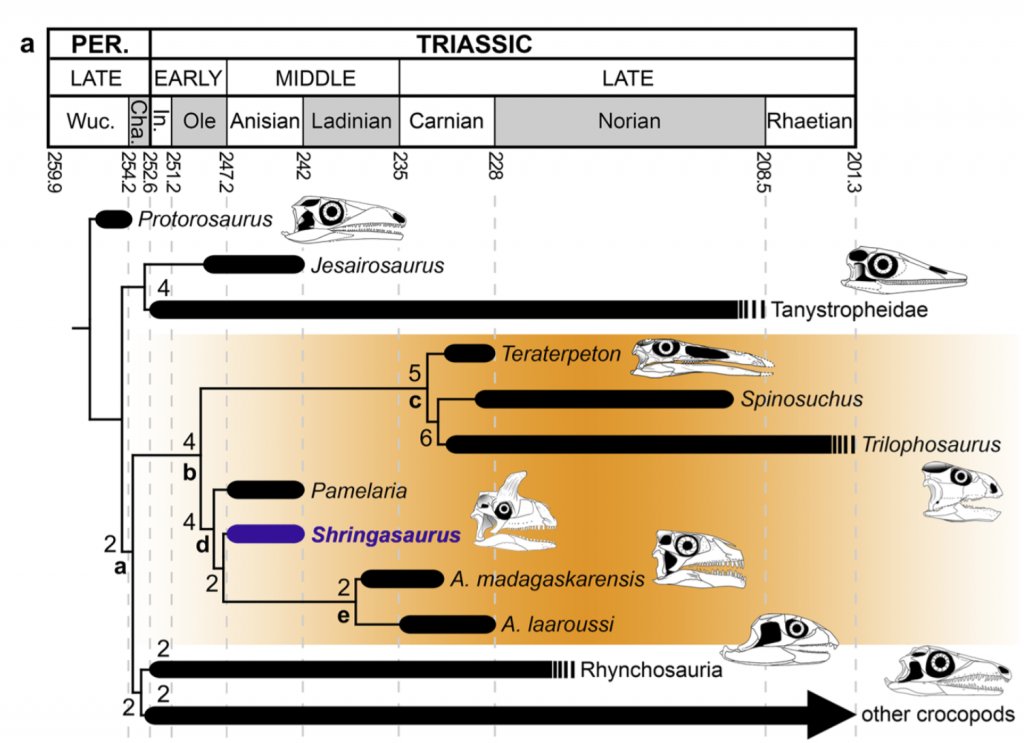
Fig. 2. Phylogenetic position of Shringasaurus within the stem archosauromorphs. Some of you may recognise the Tanystropheidae, a clade that includes species with outrageously long necks. The crurotarsan and ornithodiran lineages, that give rise to the modern crocodiles and birds respectively, can be seen at the bottom of the tree, as part of the “other crocopods”. Credit: Sengupta et al., 2017.
Strikingly, this creature possesses two horns above its eyes (supraorbital horns) that would have likely been covered in keratin in life (Fig. 3). This is an animal that appears to belong in the original Ghostbusters, guarding the gate to a different dimension. The skull itself is short, and houses conical, peg-like teeth, convergent with sauropods, whilst the acetabulum (the socket in the hip that accommodates the femur), is full closed, providing insight into it’s gait. Closed acetabula are indicative of a sprawling gait, whereby the femur is held more horizontally as opposed to straight under the body. Force generated by foot hitting the ground and taking the animals weight is directed into the hip socket, rather than upwards like in humans or most dinosaurs, resulting in the need to reinforce the socket with a wall of bone. Dinosaurs, on the other hand, experience very little stress in this area, with the force directed upwards with each footfall. As a result they have open acetabula, with a bony shelf above them to accommodate the stresses of an erect gait.
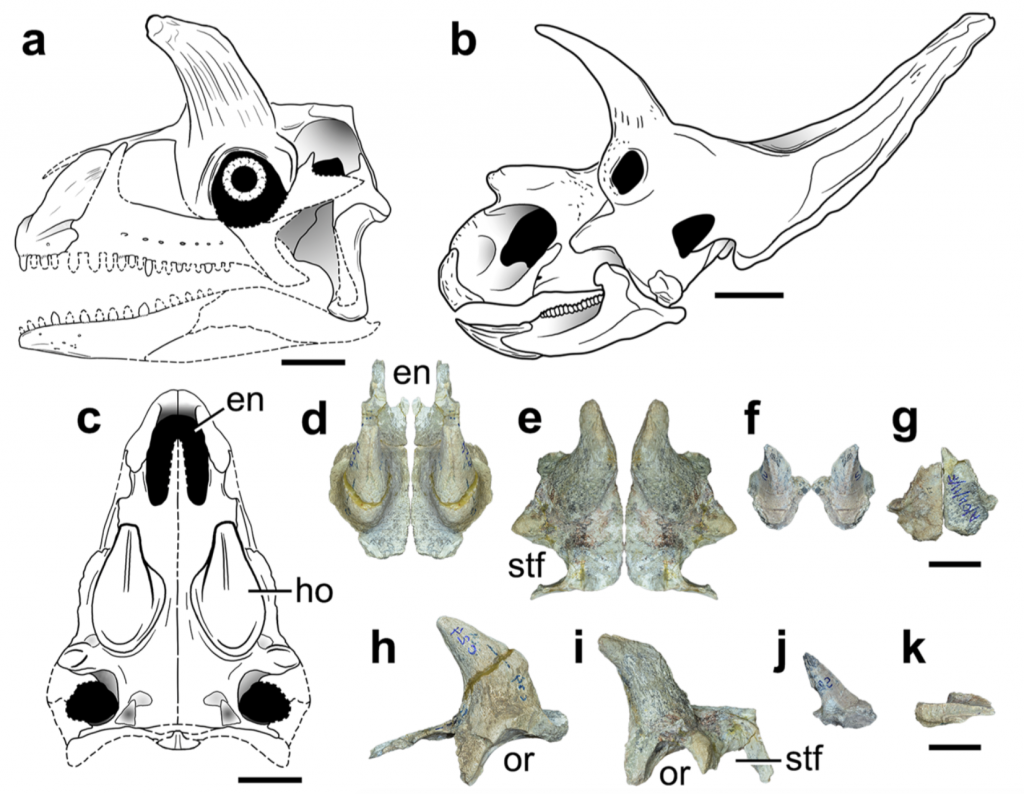
Figure. 3. Skull of Shringasaurus (a) versus the ceratposian Arrhinoceratops (b). Note the partial skulls, some digitally mirrored (d, f), showing various horn morphologies, ranging from large to absent. Credit: Sengupta et al., 2017.
Shringasaurus was discovered as part of a bonebed containing at least seven other individuals, each varying in ontogenetic stage, with horns present in the adult stages only. This is logical, the authors note, as this lowers the physiological cost for the young individuals, as these would have been significant to make, maintain and transport. Importantly, these are traits that characterise sexually selected characters. Had these been used for species recognition, for instance, the physiological cost would have been minimal as would be their variability (too many differences increase the chances you end up mistaking your conspecific). Across several amniote clades one can find the presence of horns used to signal fitness and challenge rivals of the same sex in combat for access to members of the opposite sex. Modern bovid mammals and some chameleons are guilty of this, and the extinct ceratopsians most likely followed suit (with some cool evidence for intraspecific combat too!).
Interestingly, writes Sengupta and colleagues, Shringasaurus appears to show dimorphism, with the presence/absence of horns within the species, a trait unknown in modern or extinct archosaurs. This further bolsters the sexual selection hypothesis, as these horns are effectively useless as anti-predator devices, but are instead used in ritualised combat for mates, as seen in modern bovids and chameleons for instance. These are honest signals of fitness too, as not only are they tested often by other members of the same sex, they would have been costly to produce and maintain, and as a result only the fittest individuals would be able to sport and use them effectively. The presence of prefrontal, nasal, frontal, and postfrontal fusion only helps strengthen this hypothesis. Sengupta and colleagues even went a step further and suggested a possible combat style for this bizarre archosauromorph, with horn morphology suggesting “standing wrestling” as seen in the extant reedbuck (minus the kneeling).
Finite Element Analysis (FEA) studies have been suggested by the authors in order to test their hypotheses, which I for one would welcome wholeheartedly if it means we get to understand the lives of this ugly-but-cute archosauromorph a little bit better.
Image header credit: Sengupta et al., 2017; Longrich and Field, 2012; Tschopp et al., 2015; Yathin S Krishnappa, Benjamint444/wikkicommons

